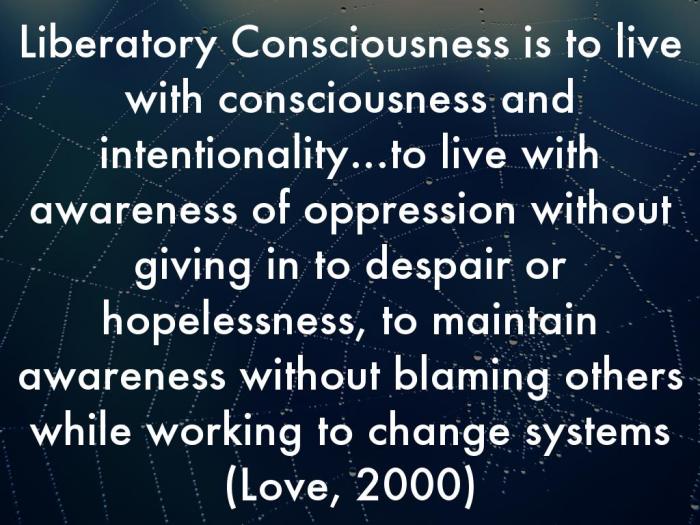The Myth of Neutral Makerspaces

Recently, I attended the Nation of Makers Conference whose theme was intentional inclusion. The single comment from the conference that stood out for me was:
Before we consider intentional inclusion, we need to consider and explore unintentional exclusion.
When I think about unintentional exclusion, I think about how implicit biases are present and strong in every human being.
An implicit bias, or implicit stereotype, is the unconscious attribution of particular qualities to a member of a certain social group. Implicit stereotypes are influenced by experience, and are based on learned associations between various qualities and social categories, including race or gender. Individuals’ perceptions and behaviors can be affected by implicit stereotypes, even without the individuals’ intention or awareness. Implicit bias is an aspect of implicit social cognition, the phenomenon that perceptions, attitudes, and stereotypes operate without conscious intention. (https://en.wikipedia.org/wiki/Implicit_stereotype)
Recent research sadly indicates that implicit bias is pervasive and insidious in makerspaces . . .
After a 10-state tour through educational makerspaces (both in-school and off-site facilities with an educational penchant), researchers from Drexel University’s ExCITe Center found a non-inclusive culture with a lack of attention to implicit biases.
Per the study, student participation rates change dramatically from K-8 (where there’s nearly equal participation by gender) to high school (where male students outnumber females by a factor of three). Program leaders and instructors remain predominantly male, and a language analysis of recruiting and instruction materials revealed evidence of implicit bias.
“Implicit bias is pervasive and insidious,” the report states. “Our evidence is specific to gender, but there may be other forms. We recommend open and frank discussions that raise awareness of implicit bias, particularly in language, internal and external communications, and design curricula that may lead to bias.” The most urgent recommendation, according to Kim, is to create concerted efforts around recruitment and language that combat existing bias in gender, race and beyond. (K-12 makerspaces lack inclusive culture, Drexel study says)
Because these stereotypical biases are often implicit and unconscious, it makes them especially resistant to awareness, exploration and modification. Due to this, I don’t believe that a truly neutral makerspace is possible but I do believe efforts should be made towards that goal or end.
Liberatory Consciousness
Liberatory Consciousness was a practice promoted and used during the Nation of Maker pre-conference and threaded through the inclusion track of the conference.
Liberatory consciousness is a force that enables an individual to live his or her life in oppressive systems and institutions with awareness and intentionality.
We understand that inequity, racial and otherwise, is the result of cumulative disadvantage built into social institutions, via law, policy, and everyday practice.
We work from an intersectional perspective, which believes that organizations and communities thrive when they build cultures that are inclusive of wide-ranging ethnic, racial, gender, sexual, religious, and national identities and abilities.
We understand that the targets of oppression are required to be at the center of efforts to transform oppression. http://desireeadaway.com/awareness-analysis-action/
Philosophically, these tenets, in my perspective, are pretty amazing and right on target. The difficulty comes in operationalizing them – making them into concrete practices for makerspaces.
Developing Best Practices for Makerspaces
After the conference, I did an extensive search on codes of conduct and inclusion for makerspaces. I expected to find a decent number of articles on this topic, but became a bit dismayed on how few I found. One article that did stand out for me was by Sylvia Martinez’s Edsurge piece, Making for All: How to Build an Inclusive Makerspace (but it’s from 2015). Some of practices she recommends for creating a more inclusive makerspace:
- Empower students not just to be passive objects of the lessons, but to include them as allies and advocates for making things that matter to them.
- Culturally responsive, situated, and relevant doesn’t mean asking students to write hip hop lyrics about the scientific method. But it doesn’t mean ignoring hip hop either. Seeing cultural practices in a maker light can open doors and blur the lines between teachers and learners.
- Sensitivity to surroundings. Research shows that girls react to surroundings that reflect stereotypical “hacker” culture by denying that they are interested in science and engineering. If you aren’t sure what vibe your classroom or makerspace is communicating, ask some kids.
- Reduce competition. Both overt contests and more subtle competition, like competition caused by a lack of adequate materials and tools, can reduce participation of girls. It can also be a barrier for beginners and students who don’t see themselves as “technical.” The competition aspect raises the stakes to a level that is too risky for students to jump in and try something they may actually enjoy.
- Don’t advantage one kind of building over another. Robots are cool, but the same technologies of micro-controllers, sensors, motors, and lights could make smart clothes, a useful invention for an elderly aunt, or better still, something no one has thought of before. Provide incentives, multiple on-ramps, praise, and glory for all kinds of making.

Leave a comment